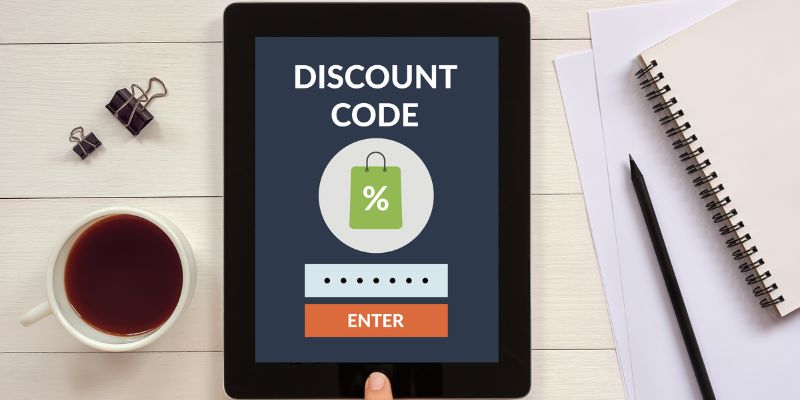Do you want to revolutionise your brand but don’t know where to start? Look no further than influencer marketing!
This blog breaks down campaigns from top brands like Nike, Samsung, and Fiji Water that showcase the power of partnering with the right influencers.
By analysing 12 successful influencer marketing campaigns, you’ll discover how to identify aligned voices, craft shareable content, and leverage influencer creativity. You’ll also see how blending personalisation, social media, and compelling storytelling has driven results.
Let’s get started!
Understanding How Influencer Marketing Campaign Works
Influencer marketing involves brands collaborating with influencers with a strong social media following and expertise in a particular area to promote products. Successful campaigns identify influencers whose interests and values align with the brand and who can create compelling, authentic content to engage their audience.
Some best practices for influencer campaigns include:
- Selecting influencers with an audience demographic that matches the brand’s target customers
- Giving the influencer creative freedom to put their unique spin on the campaign
- Promoting influencer content through the brand’s own social channels
- Tracking campaign reach/engagement and sales impact to measure effectiveness
12 Successful Influencer Marketing Campaigns To Get Inspired By Top Brands
1. Sprint: #LiveUnlimited
With the #LiveUnlimited campaign launched in 2017, Sprint demonstrated how influencer marketing can effectively revitalise a brand and connect with younger audiences. The campaign marked a strategic shift to engage Generation Z and reshape Sprint’s image.
Key aspects of the campaign included:
- Influencer collaboration: Sprint partnered with popular social media influencers like Lele Pons, Prince Royce, and Bradley Martyn instead of celebrities. This allowed the messaging to resonate authentically with Gen Z, who follow these influencers.
- Diversity: By engaging influencers from diverse backgrounds, Sprint aimed to appeal to a broad, multicultural youth audience.
- Product focus: Sprint offered unlimited data plans and transformed its marketing approach by
- Engaging individuals through sponsoring influencer content
- Providing free subscriptions to music streaming services to understand Gen Z interests
- Image makeover: The campaign helped position Sprint as empowering the lifestyles of today’s youth through personalised, relevant engagement.
By using diverse influencers, #LiveUnlimited demonstrated how influencer marketing can effectively help brands reconnect with younger demographics. It played a key role in Sprint’s strategic efforts to reshape its brand identity and appeal to Generation Z consumers.
2. Fiji Water: “Bodyworewhat”
With the goal of rebranding and reaching a wider audience, Fiji Water launched the “BodyWoreWhat” campaign in partnership with fashion and lifestyle influencer Danielle Bernstein.
Key aspects of the campaign included:
- Influencer collaboration: Fiji Water partnered with Bernstein, who featured the brand in a series of eight-minute workout videos with her personal trainer.
- Product placement: In the videos, both Bernstein and her trainer were seen consuming Fiji Water to emphasise its association with fitness and hydration.
- Targeting lifestyle trends: This aligned Fiji Water with the growing interest in health, wellness and fitness for Bernstein’s audience.
- Brand visibility: Leveraging Bernstein’s large following generated substantial online buzz, elevating Fiji Water’s image beyond hotels.
- Authentic content: The real, relatable videos effectively communicated the importance of hydration in an engaging visual format.
- Trusted promotion: Using influencers like Bernstein with strong follower connections allowed a personal endorsement of the brand.
The campaign demonstrated how influencer marketing can reposition a product by aligning it with contemporary lifestyle values and interests. This resulted in Fiji Water successfully rebranding to connect with new demographics.
3. Kaikatsu Club: NETCafe VR
To promote their new VR feature, Kaikatsu Club launched an immersive influencer campaign focused on gaming and anime culture.
Key aspects included:
- Influencer collaboration: Partnering with popular cosplayer and TV personality Enakorin who appeals to their target audience.
- Strategic alignment: Enakorin is well-known among gaming and anime fans, making her ideal to represent Kaikatsu’s VR platform.
- Platform integration: Partnering with the YouTube channel Timeline Japan to feature discussions on VR games and the Kaikatsu VR experience.
- Broader reach: Leveraging Enakorin’s following and the YouTube platform to showcase the new feature.
- Authentic content: Creations focused on creating engaging content through the influencer’s experience rather than just promotion.
The campaign demonstrated how influencer marketing can be tailored to a brand’s specific product and audience. By selecting an aligned influencer and integrating the experience into their content, Kaikatsu effectively generated interest among potential customers. This highlights the importance of authenticity in influencer marketing campaigns.
4. H&M: Fall Studio Collection
H&M launched an influencer marketing initiative focused on the fashion community to promote their Fall Studio Collection.
Key aspects included:
- Influencer collaboration: Partnering with notable fashion bloggers Julie Sariñana and model Ela Velden to showcase signature looks from the collection.
- Brand positioning: This allowed H&M to position itself as accessible while still popular among notable fashion figures.
- Style alignment: The influencers embodied the collection’s aesthetics, enhancing its appeal.
- Community reach: Leveraging influencers connected the brand to their fashion audiences.
- Authentic promotion: The influencers presented the collection naturally to their followers.
The campaign demonstrated how influencer marketing can effectively promote new collections while strengthening a brand’s image within its target industry. Partnering with aligned influencers amplified the reach of H&M’s high-fashion collection launch.
5. Sperry: Boat Shoes on Instagram
For an innovative Instagram campaign, Sperry, a boat shoe brand, partnered with over 100 micro-influencers.
Key aspects included:
- Influencer identification: Sperry found brand enthusiasts already sharing high-quality photos of its products.
- Authentic engagement: These fans were invited to create visual content for Sperry’s official account.
- Target audience: The strategy engaged an audience that was genuinely interested in the brand.
- User-generated content: Leveraging authentic posts from existing fans enhanced credibility.
- Micro-influencer leverage: Partnering with smaller influencers expanded Sperry’s reach on Instagram.
The campaign demonstrated how identifying aligned micro-influencers can generate real engagement from a brand’s target market. Inviting existing fans to promote the brand strengthened credibility through user-generated content.
6. Samsung: Note 7 Launch
To launch the Galaxy Note 7, Samsung partnered with Snapchat influencer CyreneQ who has a large following.
Key aspects included:
- Influencer collaboration: Partnering with professional Snapchat artist CyreneQ.
- Platform integration: CyreneQ documented her journey to the Note 7 launch event on Snapchat.
- Insider access: Providing followers a first-hand look at the new device through her experience.
- Visibility and interest: Leveraging CyreneQ’s audience to promote the new smartphone.
- Strategic channel: Using Snapchat aligned with the platform’s tech-savvy mobile user base.
The campaign demonstrated how influencer marketing can utilise an aligned influencer’s preferred social platform to promote a product launch. This generated real engagement from Samsung’s target audience through CyreneQ’s insider access.
7. Diageo: My Tales of Whiskey
For an engaging influencer video concept, Diageo partnered with actor Nick Offerman.
Key aspects included:
- Influencer collaboration: Partnering with Offerman, known for his role in “Parks and Recreation”.
- Video format: Offerman was filmed sitting by a fireplace, enjoying a glass of whiskey.
- Viral success: The video’s simplicity and Offerman’s persona helped it gain widespread attention.
- Brand alignment: The video effectively drew attention to Diageo’s whiskey brands like Lagavulin.
- Award recognition: The campaign won a Shorty Award for Best Influencer Marketing.
The campaign’s success demonstrated how aligning an influencer’s image and interests can powerfully promote a brand through engaging, shareable content.
8. GAP: Styld.by
Gap partnered with various influencers for a collaborative campaign, including Refinery29 and WhoWhatWhere.
Key aspects included:
- Influencer collaboration: Partnering with social media personalities and blogging platforms.
- Personalised content: Each influencer showcased how they styled Gap clothing in their unique wardrobes.
- Diverse reach: Leveraging the influencers’ varied followings to promote to a wide audience.
- Direct shopping: Users could shop featured looks through links provided in posts.
- Style authority: The campaign effectively utilised the influencers’ credibility and styles to promote Gap’s fashion line.
The campaign demonstrated how leveraging multiple influencers with different audiences can powerfully promote a brand’s line through personalised, shoppable content. This enhanced both Gap’s reach and brand appeal.
9. Loeffler Randall: LR Ambassadors
For their campaign, Loeffler Randall, a high-end accessory and footwear brand, partnered with various fashion influencers, including artists, bloggers, and industry insiders.
Key aspects included:
- Influencer collaboration: Engaging social media personalities and creative professionals in the fashion space. Its LR Ambassadors were artists, bloggers, and fashion insiders leading dynamic lives.
- Personalised promotion: Influencers showcased products in ways that aligned with their unique styles. And Loeffler Randall posted about them under the hashtag #LRambassodar.
- Audience reach: Leveraging influencer followings to appeal to a wider, style-conscious market.
- Brand enhancement: Utilising influencer credibility and expression successfully strengthened Loeffler Randall’s image.
The campaign demonstrated how partnering with influencers who authentically engage with a brand’s image can help tap new audiences and elevate its market presence. This approach effectively showcased Loeffler Randall’s products through the influencers’ personalised perspectives.
10. Coca-Cola and #ShareACoke
Launched in 2011 in Australia, the campaign personalised Coke bottles with names. It increased sales by 7%, and nearly 2,50,000 personalised Coke bottles were sold in the first three months of the campaign.
Key aspects included:
- Personalisation: Bottles featured popular names to create personal connections.
- Social sharing: Consumers were encouraged to find bottles of friends/family and share experiences online.
- Consumer engagement: This effectively turned people into brand ambassadors.
- Amplified reach: Leveraging social media significantly boosted the visibility of the campaign.
- Brand interaction: The clever use of personalisation and online sharing strongly increased engagement with Coca-Cola.
The success of “#ShareACoke” demonstrated how personalisation combined with social media can powerfully grow a brand’s visibility and consumer interactions on a global scale.
11. Daniel Wellington and #DWPickoftheDay
The watch company partnered with influencers across platforms who wore DW watches in their posts with the hashtag #danielwellington. Daniel Wellington conducted multiple photo contest campaigns called Pick of the Day. The best picture with the hashtag used will win a new watch.
Key aspects included:
- Influencer collaboration: Social media personalities showcased watches.
- Branded hashtag: Photos were tagged ‘#dainelwellington’ and “#DWPickoftheDay”.
- Lifestyle integration: Watches were paired with unique styles/settings.
- Visibility and engagement: The approach drove widespread brand awareness.
- Diverse appeal: Blending product promotion with lifestyle content attracted a broad audience.
- Brand positioning: The campaign established Daniel Wellington as trendy yet accessible.
The success of “#DWPickoftheDay” demonstrated how integrating products authentically into influencer content can powerfully promote a brand, drive engagement, and influence perception.
12. Nike and #Breaking2
The 2017 event aimed to break the two-hour marathon barrier using world-class runners.
Key aspects included:
- Product showcase: Highlighting Nike’s innovative Zoom Vaporfly Elite shoes.
- Brand association: Emphasizing Nike’s role in pushing human limits in sports.
- Global engagement: Leveraging storytelling, social media, and live streaming.
- Narrative development: Creating an inspiring tale of athletic excellence and sports tech advancement.
- Image enhancement: Strengthening Nike’s leadership perception in motivation and sports innovation.
The blend of innovation, storytelling, and global reach demonstrated how influencer marketing can powerfully promote a brand’s image through an aspirational narrative around its products. This significantly bolstered the perception of Nike.
Buzzfame: The Best Influencer Marketing Agency For Your Brand!
BuzzFame, the best influencer marketing platform in India helps to connect top-tier influencers with brands to captivate audiences and drive action.
With over 500 influencers across various platforms and niches, we meticulously match clients to the right voices for their unique goals. Through close collaboration, we craft engaging, authentic content that resonates.
Dedicated to excellence, our process ensures smooth communication between influencers and brands. With a proven track record of success partnering with 25+ brands, we’ve achieved 50 million+ reach and engagement rates 10 times the industry average.
Our collaborative approach and extensive network empower brands to reach new prospects effectively through trusted influencer relationships. If you are an influencer or a brand, approach here.
Conclusion
The successful influencer marketing campaigns demonstrate how influencer marketing can reshape brands when done strategically. Whether leveraging micro or macro influencers, personalising content, or blending products into lifestyle narratives, these top campaigns offer valuable lessons.
Prioritising authenticity and giving influencers creative freedom proved key to driving results. As the field evolves, analysing real examples provides actionable insights for boosting visibility, appeal, and engagement through trusted online voices.
Influencer marketing remains a powerful strategy when brands collaborate creatively with aligned influencers.
Also, you can get frequent updates on buzzfame instagram page
Frequently Asked Questions (FAQs)
1. What are the benefits of influencer marketing?
Influencer marketing can help brands increase brand awareness, drive sales, engage new audiences, and strengthen their image when done effectively. It allows brands to authentically promote to target demographics through trusted voices.
2. How do I find the right influencers for my campaign?
Look for influencers whose interests and audiences align with your brand. Check their engagement rates and followers. Make sure their content is a good fit for your message and values. You can search by keywords, hashtags, or location to discover influencers.
3. What is the best content format for influencer campaigns?
There is no one-size-fits-all format. Different campaigns used photos, videos, polls, collaborations, etc. Based on the case studies, engaging formats like tutorials, behind-the-scenes access, brand hashtags, or reviews seem to perform well. Authentic lifestyle integration is also effective.
4. How do I measure the success of an influencer campaign?
Track metrics like website traffic, sales conversions, follower growth for influencers/brands, social shares, and comments. Survey participants about brand awareness, perception, or purchase intent changes. Case studies also measured PR value, and awards won to indicate broader success.
5. How long do influencer campaigns typically run for?
There is no set duration. Campaigns studied ran from a few weeks to an ongoing partnership. Shorter campaigns (1-3 months) tend to create buzz, while longer collaborations strengthen relationships and recall over time. Consider your objectives and evaluate performance frequently.










